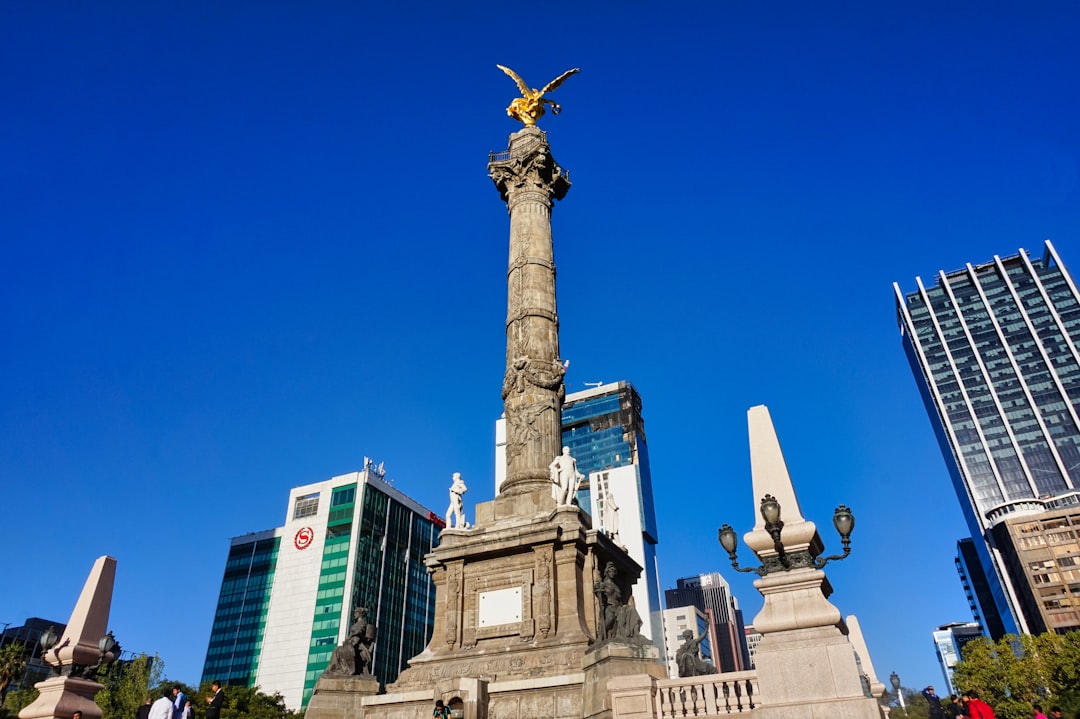Beach and Mountain Nomad Gems Across Latin America

Sun‑Kissed Shores: Beach Havens for the Mobile Workforce
Latin America’s coastline stretches for thousands of kilometres, offering a spectrum of beach towns that blend reliable connectivity with a laid‑back lifestyle. For digital nomads, the ideal seaside spot provides more than just a backdrop for Zoom calls – it delivers a community of like‑minded creators, affordable living, and enough adventure to keep the mind sharp after long work sessions.
Rio de Janeiro, Brazil
The “Cidade Maravilhosa” remains a magnet for freelancers who crave the rhythm of samba alongside solid Wi‑Fi. In neighborhoods such as Copacabana and Ipanema, coworking spaces like WeWork Rio and Impact Hub deliver high‑speed internet, ergonomic desks, and regular networking events. Daily costs are modest; a shared apartment can be found for around USD 600‑800 per month, while street food such as pastel and acarajé keeps meals under USD 5.
Beyond the office, the city’s iconic Christ the Redeemer statue, vibrant nightlife, and surf‑ready waves create a balanced routine. For those who need a quieter setting, the nearby town of Búzios offers boutique cafés with stable connections and a slower pace, while still being a short ferry ride from Rio’s international airport.
Medellín‑Adjunct Coastal Escape: Santa Marta, Colombia
While Medellín dominates the inland nomad conversation, its coastal sibling Santa Marta is gaining traction. The city’s historic Centro Histórico is dotted with cafés offering Wi‑Fi speeds that comfortably support video conferencing. The Nomad Hub Santa Marta coworking space provides private booths, fast internet, and a rooftop terrace overlooking the Caribbean Sea.
Living costs are particularly friendly; a one‑bedroom apartment in the El Rodadero area averages USD 400 per month. The region’s natural wonders – the Tayrona National Park, the Sierra Nevada mountains, and the Lost City trek – give weekend explorers plenty to do. After a day of trekking, a fresh coconut water on the beach serves as the perfect reset.
Playa del Carmen, Mexico
The Riviera Maya’s most accessible digital nomad hub, Playa del Carmen, blends an international community with a tropical setting. Coworking venues such as Bunker and Selina Co‑Working provide 100 Mbps fiber connections, private phone booths, and regular skill‑sharing workshops. Rental apartments near 5th Avenue (Quinta Avenida) are available for USD 800‑1,200 per month, often inclusive of utilities and high‑speed internet.
The city’s proximity to Cozumel and the Mesoamerican Reef means snorkeling, diving, and island hopping are just a short ferry ride away. Evenings can be spent strolling the bustling boulevard, sampling tacos al pastor, or attending a beach yoga class. For nomads seeking a quieter rhythm, the nearby town of Tulum offers boutique eco‑lodges and beachfront cafés that cater to remote workers.
Valparaíso, Chile
Chile’s Pacific jewel, Valparaíso, is a UNESCO World Heritage city renowned for its colorful hillside houses and street art. The Muro coworking space occupies a historic building with panoramic views of the harbor, offering reliable internet and a relaxed vibe. Rent for a studio in the Cerro Alegre district sits around USD 500‑700 per month, often including utilities.
The city’s bohemian atmosphere is punctuated by weekly ferias (markets) where fresh produce and artisanal goods are sold. After work, nomads can ride the iconic funiculars to the Cerro Concepción and watch the sunset over the Pacific. The nearby beach town of Viña del Mar provides a more conventional seaside experience with a larger selection of restaurants and nightlife.
San Juan del Sur, Nicaragua
Located on Nicaragua’s Pacific coast, San Juan del Sur has evolved from a surf‑focused backpacker hub into a viable base for remote professionals. The Surf & Work coworking hub offers a laid‑back environment, fast Wi‑Fi, and a community that blends surfers with developers and writers. A beachfront bungalow can be rented for USD 350‑500 per month, often with utilities included.
The town’s surf breaks such as La Boquilla cater to both beginners and seasoned riders. For those less inclined to catch waves, the nearby Mombacho Volcano presents hiking trails that culminate in cloud‑forest vistas. Evening markets serve nacatamales and fresh ceviche, keeping meals affordable and flavorful.
Cartagena, Colombia
The walled city of Cartagena delivers colonial charm alongside a growing digital nomad infrastructure. Coworking spaces like Coworking Cartagena and Tink provide high‑speed internet, meeting rooms, and a calendar of community events. A centrally located apartment in the Getsemaní district can be rented for USD 700‑900 per month, often with inclusive internet.
When the laptop is closed, the city’s historic fortifications, vibrant street art, and Caribbean cuisine keep life interesting. Day trips to the Rosario Islands offer snorkeling opportunities, while the nearby Islas del Rosario provide a quieter setting for focused work sessions in beachfront cabins.
Jericoacoara, Brazil
Tucked away in the dunes of Ceará, Jericoacoara (or “Jeri”) is a remote beach town that has attracted digital nomads looking for seclusion without sacrificing basic amenities. The Jeri Hub coworking space, though modest, offers reliable internet (averaging 30 Mbps) and a community of artists, photographers, and developers. Rental costs for a simple wooden house near the beach start at USD 300‑450 per month.
The town’s lack of paved roads means it feels untouched; dunes, lagoons, and the iconic Pedra Furada rock formation provide endless photo opportunities. Sunset kite‑surfing lessons and nighttime bonfires create a sense of camaraderie among residents. The nearest airport in Fortaleza is a three‑hour drive, making occasional trips to a larger city feasible.
Punta del Este, Uruguay
Uruguay’s premier resort city, Punta del Este, offers a more upscale beach lifestyle. While living costs are higher – a one‑bedroom apartment near La Barra can reach USD 1,200‑1,500 per month – the city compensates with a reliable digital infrastructure and a vibrant expat community. Coworking options include The Hub Punta del Este, which provides fast fiber, private offices, and regular tech meet‑ups.
During the summer months, the city hosts the International Film Festival, art fairs, and beach parties that draw creatives from across the globe. In the off‑season, the beaches are quieter, making it an ideal time for focused work. A short drive to Montevideo offers additional cultural experiences and a larger airport for international travel.
Puerto Escondido, Mexico
Known for world‑class surfing, Puerto Escondido on Mexico’s Oaxacan coast has quietly become a remote work haven. The Co‑Working Playa space provides stable internet, a communal kitchen, and a rooftop terrace with views of the Zicatela beach. Rent for a modest studio near the Adoquin area averages USD 350‑550 per month, often with utilities included.
Beyond surf, the town offers access to the Manialtepec Lagoon, where biolumarint algae light up the water at night. Local markets serve tlayudas and fresh seafood, keeping food costs low. For those seeking a quieter vibe, the nearby fishing village of Mazunte offers beachfront bungalows and a more relaxed pace.
Peaks and Valleys: Mountain‑Centric Retreats for the Remote Professional
The Andes, the Central American highlands, and the volcanic ranges of the Caribbean form a spine of elevated locales that combine crisp air, inspiring scenery, and growing digital amenities. These mountain towns often provide a cooler climate, lower humidity, and a sense of isolation that many nomads find conducive to deep work.
Medellín, Colombia – The “City of Eternal Spring”
While Medellín is technically a valley city, its elevation at 1,500 m grants a temperate climate year‑round. The city’s infrastructure for remote workers is unrivaled in Latin America. Coworking spaces such as Selina Co‑Working, WeWork, and Atom House deliver fiber‑optic internet exceeding 100 Mbps, ergonomic furniture, and community events ranging from coding bootcamps to language exchanges.
Housing options are abundant; a furnished one‑bedroom apartment in El Poblado or Laureles can be secured for USD 700‑1,000 per month, often inclusive of internet and utilities. The city’s extensive metro system makes commuting effortless, and the surrounding Aburrá Valley offers day trips to coffee farms, paragliding over the mountains, and hikes to the Parque Arví ecological reserve.
Medellín’s expat community is vibrant, with regular meet‑ups, tech conferences, and cultural festivals that make networking easy for freelancers and entrepreneurs alike.
Salta, Argentina – The Colonial Gateway to the Andes
In northwestern Argentina, Salta blends Spanish colonial architecture with a gateway to the high Andes. The city’s downtown, Cerro San Bernardo, hosts several coworking venues such as Co‑Work Salta and The Hub, each offering reliable internet speeds around 50 Mbps and a community of developers, designers, and remote consultants.
Rental costs are modest; a two‑bedroom apartment near Plaza 9 de Julio averages USD 400‑600 per month, often with utilities. The city’s culinary scene, highlighted by empanadas salteñas and locro, keeps dining affordable.
Adventure seekers can drive the Camino de los Siete Lagos, a scenic route that traverses alpine lakes and volcanic peaks, or hike the Cerro San Bernardo for panoramic views of the city and surrounding valleys. The nearby Quebrada de las Conchas national park offers striking rock formations and a perfect backdrop for weekend photography trips.
Santiago, Chile – Urban Base with Access to Alpine Resorts
Chile’s capital, Santiago, may appear as a bustling metropolis, yet its proximity to the Andes makes it an ideal launchpad for mountain‑focused nomads. The city’s coworking ecosystem includes Urban Station, Co‑Work LAB, and Impact Hub, each delivering fiber connections exceeding 200 Mbps, private meeting rooms, and regular startup events.
Housing varies; a central apartment in Providencia or Las Condes can be rented for USD 900‑1,200 per month, often with inclusive internet. The city’s efficient metro system connects workers to the downtown business district as well as to bus routes that ascend to ski resorts such as Valle Nevado and El Colorado.
During winter, nomads can spend mornings on the slopes and afternoons in a coworking space, thanks to the short commute. In summer, the Cajón del Maipo valley offers hiking, rafting, and rock climbing, providing a balanced lifestyle of work and adventure.
Medellín‑Sister City: Cuenca, Ecuador
Set at 2,500 m above sea level, Cuenca is a UNESCO World Heritage city that has quietly become a magnet for remote workers seeking a cooler climate and a low cost of living. The Co‑Working Cuenca space provides fast internet (around 60 Mbps), a coffee bar, and weekly networking events.
A spacious two‑bedroom apartment in the historic centre can be rented for USD 450‑650 per month, often including utilities. The city’s cobblestone streets, colonial churches, and vibrant canelazo bars give a rich cultural experience.
Outdoor enthusiasts can explore the nearby Cajas National Park, a high‑altitude ecosystem of lagoons, cloud forests, and trekking routes that are ideal for weekend hikes. The park’s elevation (up to 4,000 m) offers spectacular sunrise views and a chance to disconnect from the digital world.
Oaxaca City, Mexico – A Cultural Hub Amidst Sierra Madre Peaks
Oaxaca sits on a high plateau surrounded by the Sierra Madre del Sur mountains. The city’s artistic community has fostered a growing number of coworking spaces, including Co‑Work Oaxaca and The Nest, both equipped with reliable internet and a focus on creative collaboration.
Rent for a one‑bedroom loft in the Jalatlaco neighborhood averages USD 500‑700 per month, often with utilities. Oaxaca’s culinary reputation – think mole, tlayudas, and mezcal – ensures that food lovers are well catered for.
Mountain treks to Hierve el Agua, a set of petrified waterfalls, and the Sierra Norte biosphere reserve provide opportunities for hiking, birdwatching, and exploring indigenous villages. The city’s frequent art fairs and music festivals create a vibrant social calendar for remote workers.
Boquete, Panama – Cloud Forest Comfort for the Remote Worker
Nestled in the highlands of western Panama, Boquete enjoys a mild climate year‑round, thanks to its elevation of roughly 1,200 m. The town’s Co‑Working Boquete hub offers fast internet (around 40 Mbps), a quiet atmosphere, and a community of expats, coffee growers, and digital creators.
A modest two‑bedroom house near the Cerro Punta road can be rented for USD 600‑800 per month, often inclusive of utilities. Boquete is famous for its coffee plantations; many remote workers participate in coffee‑tasting tours and learn about sustainable farming practices.
Hiking enthusiasts can tackle the Volcán Barú, Panama’s highest peak, which provides panoramic views of both the Pacific and Caribbean coasts on clear days. The town also hosts an annual Boquete Flower and Coffee Festival, attracting visitors from across the region.
San Cristóbal de las Casas, Mexico – Colonial Charm in the Chiapas Highlands
At an elevation of 2,200 m, San Cristóbal de las Casas offers a cool climate and a bohemian vibe that appeals to many digital nomads. The Co‑Working San Cristóbal space provides stable internet (approximately 30 Mbps), a rooftop terrace, and regular workshops on topics ranging from photography to sustainable tourism.
Rent for a two‑bedroom apartment in the historic centre can be secured for USD 400‑550 per month, utilities often included. The city’s vibrant markets sell chiapas coffee, fresh produce, and handcrafted textiles, while its colonial churches and cobblestone streets give a timeless feel.
Nearby, the Sumidero Canyon offers boat tours and hiking trails, while the highland villages of San Juan Chamula and Zinacantán provide cultural immersion experiences. The combination of affordable living, reliable connectivity, and natural beauty makes San Cristóbal a compelling choice for remote workers.
Bariloche, Argentina – Alpine Lakes and Snow‑Capped Peaks
Located in the Argentine Patagonia, San Carlos de Bariloche is a gateway to the Nahuel Huapi National Park. The town’s Co‑Work Bariloche offers fiber internet (exceeding 100 Mbps), private phone booths, and a community that includes software developers, writers, and graphic designers.
A one‑bedroom apartment near the lakefront can be rented for USD 800‑1,000 per month, often with utilities and internet. The city’s German‑inspired architecture, chocolate shops, and lakeside promenades give a unique cultural blend.
During winter, the Cerro Catedral ski resort provides world‑class slopes just a short bus ride away. In summer, the surrounding lakes, forests, and mountains invite hiking, kayaking, and mountain biking. The combination of a strong digital infrastructure and a pristine natural environment makes Bariloche a coveted base for remote professionals.
Practical Tips for Thriving in Beach and Mountain Nomad Spots
Finding the perfect locale is only part of the equation. Successful digital nomadism in Latin America also depends on planning, community building, and adapting to local rhythms.
Secure Reliable Internet Before You Arrive
Most coworking spaces advertise their connection speeds, but it is wise to verify through recent reviews or forums such as Nomad List or Reddit. In many towns, cafés may provide decent Wi‑Fi for occasional use, but for daily video calls a dedicated coworking membership or a fixed‑line home connection is advisable.
Consider purchasing a local SIM card with a generous data plan. Carriers like Claro, Movistar, and Tigo often offer 4G LTE coverage in both coastal and highland regions. A portable Wi‑Fi hotspot can serve as a backup in case the primary connection falters.
Choose Accommodations With Utilities Included
In many Latin American markets, utility costs (electricity, water, gas, and internet) can fluctuate dramatically. When possible, select rentals that bundle these services into the monthly rent. This simplifies budgeting and prevents surprise bills.
Short‑term platforms such as Airbnb, Vrbo, or local classifieds like MercadoLibre often list apartments with utilities included. For longer stays, negotiate directly with property owners to secure a fixed price.
Understand Visa Requirements
Many countries in Latin America offer tourist visas ranging from 30 to 90 days, with extensions possible for most. Digital nomads should research each country’s visa policies well in advance. Some nations, such as Mexico and Costa Rica, have special digital nomad visas that grant longer stays (up to 12 months) and the right to work remotely.
Keep copies of employment contracts, proof of income, and health insurance documents, as immigration officers may request evidence of remote work.
Build Community Early
Loneliness can creep in when working remotely, especially in smaller towns. Join coworking spaces that host weekly meet‑ups, language exchanges, or skill‑sharing workshops. Online platforms like Meetup, Facebook Groups, and Discord often have local chapters for nomads.
Participating in community events – beach clean‑ups, mountain trail maintenance, or cultural festivals – not only expands your network but also deepens your connection to the host city.
Manage Time Zone Differences
Latin America spans a range of time zones, from UTC‑5 in the Caribbean to UTC‑3 in parts of Brazil. Align your working hours with your clients or team’s schedule to avoid late‑night calls. Many nomads adopt a “core hours” approach, designating a 3‑hour window that overlaps with the majority of their collaborators’ workday.
When traveling between regions, give yourself a buffer day to adjust to the new rhythm, especially if moving from a beach locale (often more relaxed) to a high‑altitude town where the climate can affect productivity.
Stay Safe and Healthy
Most beach and mountain destinations have relatively low crime rates, but it is prudent to follow standard safety measures: avoid flashing valuables, keep copies of important documents, and be aware of local emergency numbers.
Healthcare quality varies; major cities like Santiago, Buenos Aires, and Mexico City have private hospitals that meet international standards, while remote mountain towns may have limited facilities. Obtain comprehensive travel insurance that covers medical evacuation, especially if you plan high‑altitude trekking or water sports.
Embrace Local Culture
Learning basic phrases in Spanish or Portuguese can dramatically improve daily interactions, from ordering food to negotiating rent. Many nomads find that attending a language class at a local community center not only improves language skills but also introduces them to new friends.
Try regional dishes, participate in festivals, and respect local customs. For instance, in many Andean towns it is customary to greet with a light handshake and a nod, while in coastal Caribbean regions a more relaxed, friendly “hola” suffices.
Sample Itinerary: A Two‑Month Rotational Lifestyle
To illustrate how a digital nomad might weave together beach and mountain experiences, here is a sample 8‑week itinerary that balances work, exploration, and rest.
Week 1‑2: Playa del Carmen, Mexico
- Settle into a coworking space with a 100 Mbps fiber line.
- Work mornings, explore the cenotes and the reef in afternoons.
- Attend a weekend yoga retreat on the beach.
Week 3‑4: Medellín, Colombia
- Fly to Medellín; secure a short‑term lease in El Poblado.
- Join a weekly tech meetup at Selina.
- Use weekends to visit the nearby coffee region and take a day hike to Parque Arví.
Week 5‑6: Cuenca, Ecuador
- Take a short flight to Quito, then a bus to Cuenca.
- Set up a home office in a historic centre apartment.
- Weekend trips to Cajas National Park for high‑altitude trekking.
Week 7‑8: San Juan del Sur, Nicaragua
- Travel by bus to the Pacific coast; stay in a beachfront bungalow.
- Work from the Surf & Work coworking hub.
- Spend evenings at the surf break and mornings exploring Mombacho Volcano.
This rotational model keeps the environment fresh, reduces burnout, and provides exposure to varied cultures and climates. Adjust the length of each stay based on visa limits and personal preferences.
Conclusion
Latin America’s coastline and mountain ranges together form a diverse tapestry of environments that cater to the modern digital nomad. From the surf‑filled streets of Santa Marta to the alpine serenity of Bariloche, each destination offers a blend of reliable connectivity, affordable living, and a community that welcomes remote workers.
By selecting locations that align with personal work habits, budgeting wisely, and immersing oneself in local culture, nomads can turn the world into an ever‑changing office that fuels both creativity and productivity. The continent’s beach and mountain gems are ready – all that remains is the decision to pack a laptop, a surfboard, or a pair of hiking boots and begin the journey.
Random Posts

Essential Finance Tips for the Global Freelancer
Learn how global freelancers can master multi-currency payments, tax residency rules, and smart budgeting while hopping between coworking hubs, so you keep more of what you earn.
2 weeks ago

Boost Your Output A Guide to Remote Work Essentials
Turn your home office into a high performance hub with proven habits, tools, and mindset tricks that boost productivity while keeping work life balance intact.
3 weeks ago

Balancing Focus And Flexibility In A Borderless Work Environment
Learn how to keep deep focus while staying flexible in a borderless workplace - strategies, mindset, and tools that let teams across time zones deliver results without burnout
1 month ago

Wellbeing Strategies Every Digital Nomad Should Know
Boost your nomadic life with portable routines, balanced nutrition, daily movement, mental resilience and community tips, stay healthy, energized and thriving wherever you work.
1 week ago

Minimalist Packing Secrets for Digital Nomads
Learn to pack light and work anywhere, using minimalist tricks that free space, boost focus, and cut waste, with a step by step system perfect for weekend hackathons or months-long stays.
1 month ago
Latest Posts

Essential Software Every Remote Professional Should Use
Master remote work with essential tools: instant messaging like Slack, high definition video calls such as Zoom, and asynchronous voice apps. Streamline communication, stay connected and boost productivity.
1 day ago

Mastering Remote Work Productivity for Digital Nomads and Freelancers
Learn proven habits, tools, and tactics that help digital nomads and freelancers stay focused, deliver quality work, and maintain a sustainable lifestyle while traveling the world.
1 day ago

Tech‑Friendly European Towns Perfect for Remote Living
Discover Europe’s best small towns where fast internet, affordable living and vibrant tech communities let you work remotely while soaking up historic charm, lakeside views or mountain air.
1 day ago